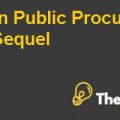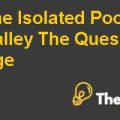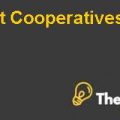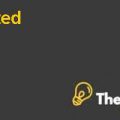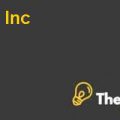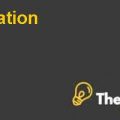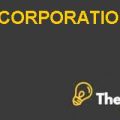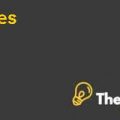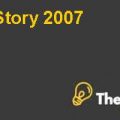
Step 1: Financial Position and Performance Measure
Analysis of Starbucks’ common sized financial statements reveals that the total revenues have increased by 63% and 50% during the year 1995 and 1996 respectively. In addition, higher part of its cost comprises of sales and related occupancy cost that is 57% of total revenue but the cost of sales is not being controlled well because it has increased to 59% of total revenue during the year 1996. Moreover, the second highest component of cost is stores’ operating cost that was 32% of total revenue in 1994 and has been well under control and has been decreased to 30% of total revenue in the year 1996. Additionally, the operating profits has been maintained between 8% to 9% of total revenue during the period 1994 to 1996 and net income represents 4% of total revenue but the good thing is that they have been continuously improving and during the year 1996 net revenues have reached 6% of total revenues.
However, the growth in total revenues is falling over the three year period from 63% to 50%, meanwhile; growth in operating income has fallen from 72% during 1994 to 42% during 1996. Starbucks has experienced greater fall in growth operating income as compared to av fall in sales revenue, and this represents poor control of operating cost.
On the other hand, the working capital ratios during the year 1995 has been very poor except the trade receivable turnover ratio, which means that management of receivables has been performed very well. However, the improving inventory turnover ratios show that Starbucks has increased sales during the three year period from 1994 to 1996. Moreover, the liquidity position has also been strengthened over the three year period and its current ratios have improved from 2.09 during 1994 to 3.36 during the year 1996. Meanwhile, the quick current ratio has also improved during the same period, which ensures that Starbucks has enough cash resources to pay off its current liabilities. Moreover, the debt to equity ratio has also been decreased from 0.74 in 1994 to 0.38 in 1996, which shows that Starbucks is using more equity and internal funds in order to finance its capital expenditures over the three year period.
In addition, the earning per share has also been improved from $0.17 per share during 1994 to $0.47 per share during the year 1996. However, Starbucks has faced a continuous fall in its average share price; consequently, this has reduced the price to earnings (P/E) ratio over the three year period from 1994 to 1996. Additionally, Starbucks has failed in effectively utilizing their assets because their asset turnover ratio has fallen from 1.23 during 1994 to 0.96 during 1996.
Step 2: Business Competitive Environment
Starbucks stakeholders include suppliers who are the exporters of coffee, consumers the world wide consumers, employees who process and serve coffee to consumers, shareholders and management-owners.
Specialty coffee industry is growing 15% per year but the basic industry is suffering and the US per capita consumption of coffee has been fallen to 1.7 cups per day during the year 1996
Starbucks has developed technologically improved process and search of new materials in order to give a unique taste that has helped Starbuck to capture the big market share. Moreover, quick service and use of computer systems to process customer have led Starbucks to improved customer relation, consequently, it has increased the customer base.
Further, Starbucks has huge offers to the market and a large share of market that will remain generally invulnerable to danger of new contestants. Moreover, Starbucks has years of experience in roasting specialized coffee and if an organization was to enter the espresso business then it will be amazingly troublesome for them to offer the same nature of espresso at a focused cost. As an organization's volume builds, so does its encounter and learning, which has a tendency to reduce the cost of its items.
Buyers’ power depends on number of conditions such as the purchase volume of buyers is high and coffee industry comprises of large numbers but small operators and availability of alternative sources. However, since buyers are very small individual customers but with no switching cost, coupled with availability of alternates, therefore, buyers have strength to some extent.
Suppliers of Starbucks comprises of mainly the farmers and exporters of coffee beans and the fact that there are one third of farmers who own less than three acres means that majority of farmers own higher coffee fields, which reduces their bargaining power but the quality and prices of beans will be derived by the efforts of farmers that will give them more power.
Moreover, the alternate of coffee could be a cup of tea but again the taste lovers would not be willing to switch for a less tasty alternate, hence, there are no such strong alternates to coffee that gives Starbucks more strong position ................................
This is just a sample partial case solution. Please place the order on the website to order your own originally done case solution.

